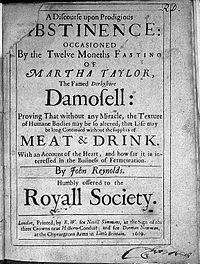
Photo from wikipedia
To assess the bioequivalence of a generic safinamide tablet (test) vs a brand‐name safinamide tablet (reference) and effects of food on the pharmacokinetics of safinamide in healthy Chinese subjects, a… Click to show full abstract
To assess the bioequivalence of a generic safinamide tablet (test) vs a brand‐name safinamide tablet (reference) and effects of food on the pharmacokinetics of safinamide in healthy Chinese subjects, a single‐center, single‐dose, randomized, open‐label, 2‐preparation, 2‐period study with a 15‐day washout period was undertaken. A total of 56 healthy subjects were recruited in this study (fasting, n = 28; fed, n = 28). A single dose of a 100‐mg test or reference safinamide tablet was administered to each subject in a randomized sequence. Blood samples were obtained at 5 minutes before drug administration and during the 120 hours after dosing. The safinamide concentration in plasma was determined by high‐performance liquid chromatography–tandem mass spectrometry. Pharmacokinetic parameters were analyzed with noncompartmental methods. Safety was also monitored. The major pharmacokinetic parameters including maximum plasma drug concentration, area under plasma concentration‐time curve (AUC) from zero to time t (AUC0‐t), and AUC from time 0 to infinity (AUC0‐∞) were similar between the test and reference tablets under fasting and fed conditions. The 90% CIs of the test/reference ratios of log‐transformed maximum plasma drug concentration, AUC from zero to time t, and AUC from time 0 to infinity all fell within the equivalence interval (80.0%‐125%) whether under fasting condition or fed condition. In conclusion, the 2 formulations of safinamide tablets were bioequivalent and well tolerated under both fasting and fed conditions in healthy Chinese volunteers. High‐fat food delayed the absorption of safinamide but did not affect the final bioavailability.
Journal Title: Clinical Pharmacology in Drug Development
Year Published: 2022
Link to full text (if available)
Share on Social Media: Sign Up to like & get
recommendations!